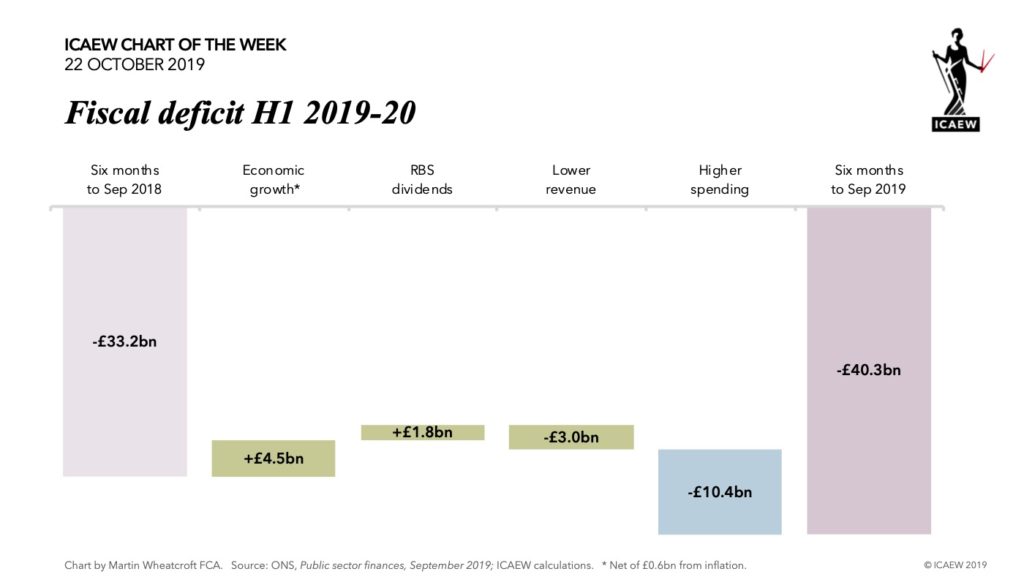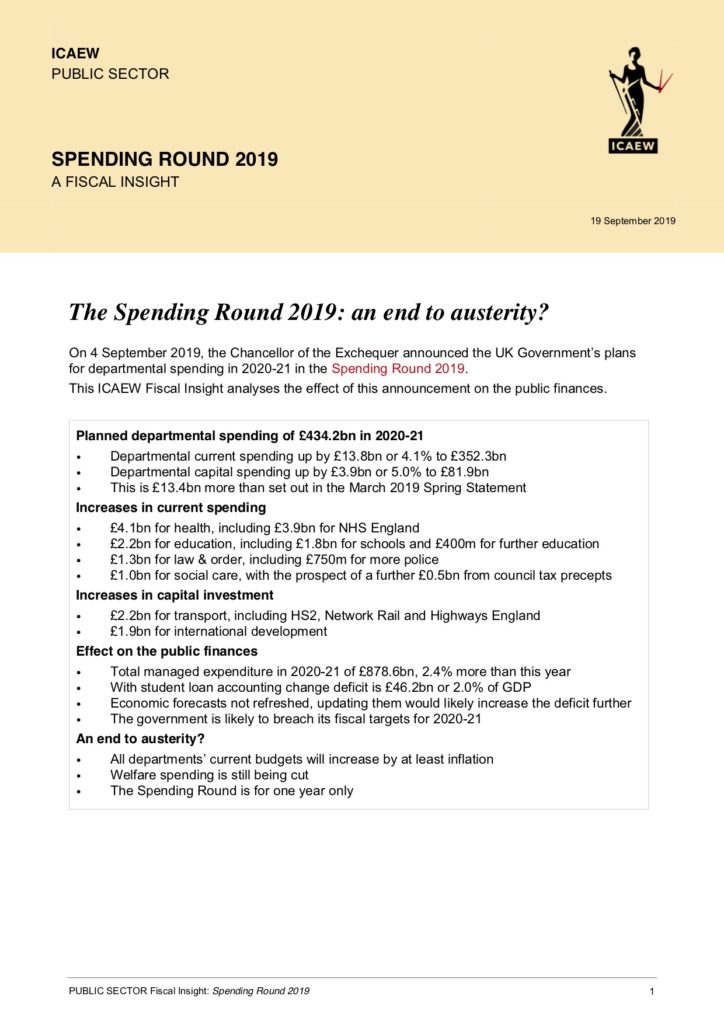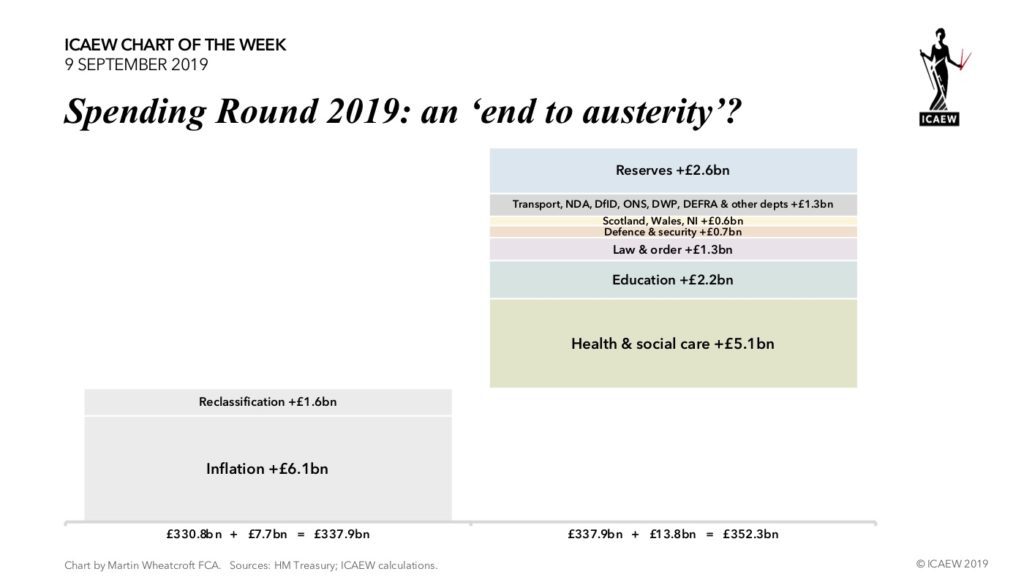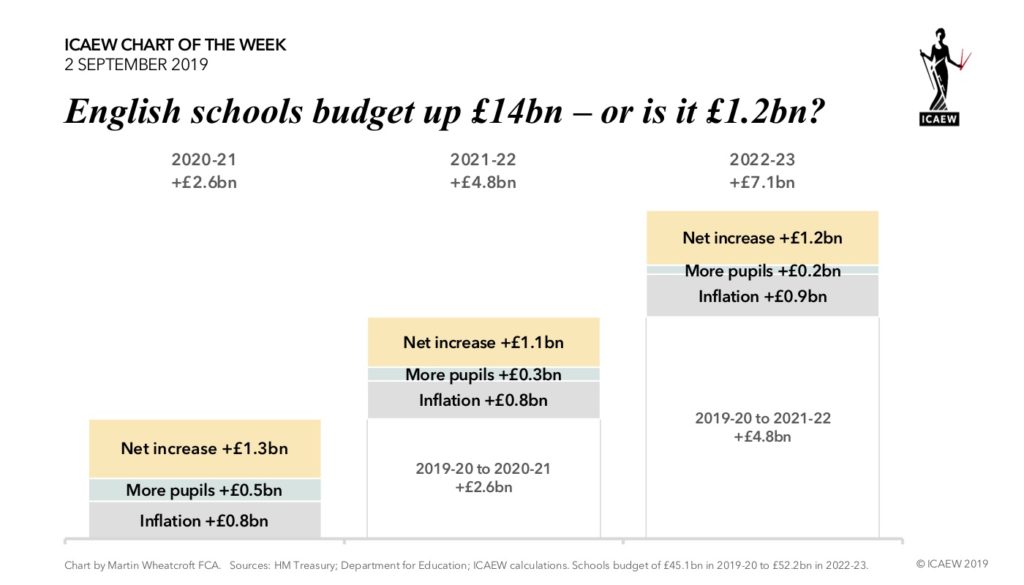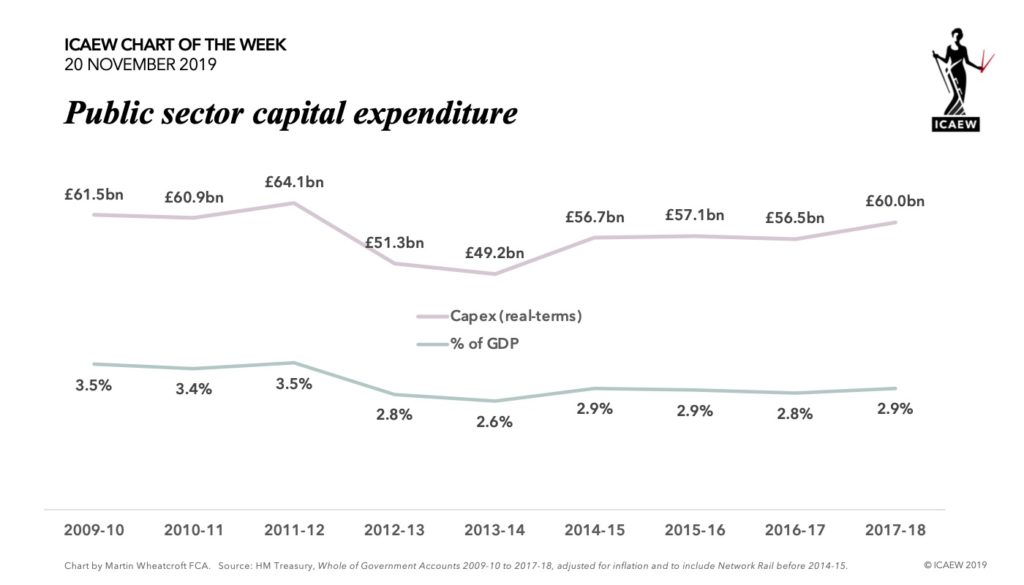
With apologies for the delay because of being away, this week’s #ICAEWchartoftheweek is on public sector capital expenditure (capex), something that all the political parties in the #GE2019 have promised to increase – in some cases by very significant amounts!
As part of ICAEW’s It’s More Than A Vote campaign, ICAEW will be analysing the political party manifestos over the next few weeks, including the potential implications for the public finances.
One area that all the major parties appear to agree on is the need to increase investment in infrastructure and other assets, which is why we thought we would look at the last nine years of capital expenditure reported in the Whole of Government Accounts (WGA), prepared under International Financial Reporting Standards. This differs from public sector investment in the National Accounts, with the latter including capital grants and other transactions that do not result in the creation of publicly-owned fixed assets.
As the chart illustrates, capital expenditure in 2017-18 of £60.0bn was lower than the £64.1bn incurred in 2011-12 after adjusting for inflation and to include Network Rail, the government owned railway infrastructure company prior to 2014-15 when it was incorporated into the WGA). As a proportion of the economy, capex in 2017-18 was 2.9% of GDP, a smaller ratio than the 3.5% calculated for 2011-12.
Only around £16bn (0.8% of GDP) of the amount spent in 2017-18 went into infrastructure assets (principally transport infrastructure such as roads and railways), with in the order of £24bn (1.2%) going into land & buildings, including hospitals and schools. Approximately £9bn (0.4%) was spent on military equipment, with the balance of £11bn (0.5%) invested in other public sector assets, ranging from tangible fixed assets such as plant & equipment, IT hardware, vehicles and furniture & fittings, as well as intangible fixed assets such as software.
Capex comprises a relatively small proportion of total expenditures (capital and non-capital) of £1.0tn reported in the WGA for 2017-18. As a consequence, even relatively small incremental amounts will constitute proportionately large increases in capital budgets in the next few years.
Whether these plans will be deliverable is another question, given that traditionally the government has struggled to spend all its capital budgets, not to mention the difficulties there will be in finding all the workers necessary for a major expansion in construction activity.
